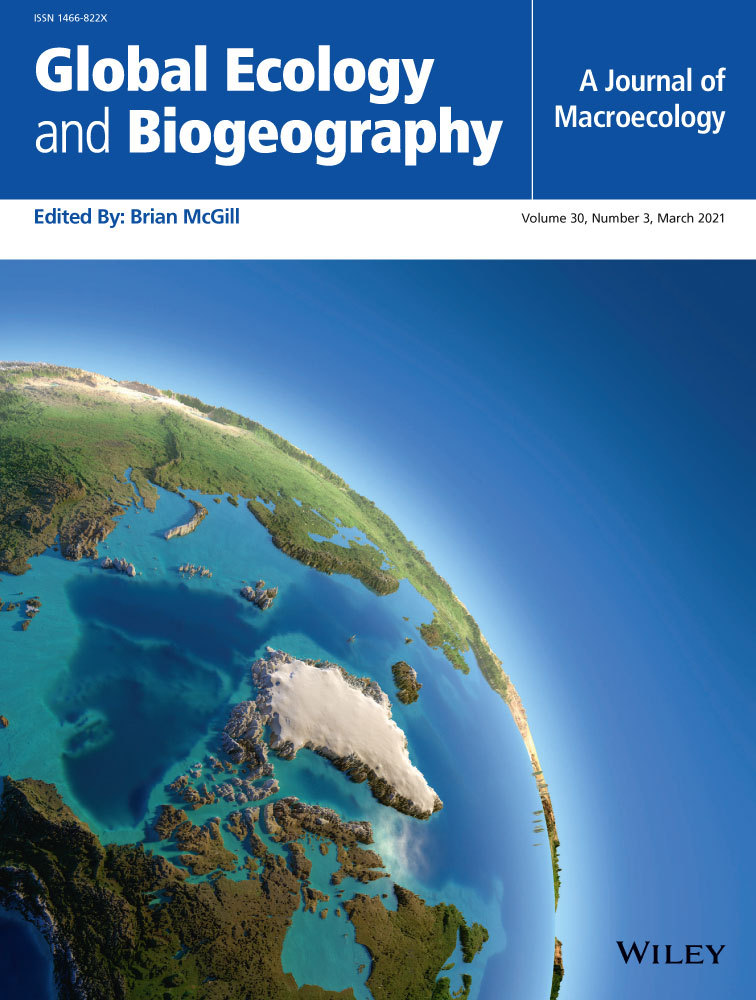DOI:
https://doi.org/10.1111/geb.13889Score Altmetric:
Dimensions Nombre de citations:
Année de publication
2024
Auteurs
Hordijk, I.; Bialic-Murphy, L.; Lauber, T.; Routh, D.; Poorter, L.; Rivers, M.C.; ter Steege, H.; Liang, J.; Reich, P.B.; de-Miguel, S.; Nabuurs, G.-J.; Gamarra, J.G.P.; Chen, H.Y.H.; Zhou, M.; Wiser, S.K.; Pretzsch, H.; Paquette, A.; Picard, N.; Hérault, B.; Bastin, J.-F.; Alberti, G.; Abegg, M.; Adou Yao, Y.C.; Almeyda Zambrano, A.M.; Alvarado, B.V.; Alvarez-Davila, E.; Alvarez-Loayza, P.; Alves, L.F.; Ammer, C.; Antón-Fernández, C.; Araujo-Murakami, A.; Arroyo, L.; Avitabile, V.; Aymard Corredor, G.A.; Baker, T.; Banki, O.; Barroso, J.; Bastian, M.L.; Birigazzi, L.; Birnbaum, P.; Bitariho, R.; Boeckx, P.; Bongers, F.; Bouriaud, O.; Brancalion, P.H.S.; Brandl, S.; Brienen, R.; Broadbent, E.N.; Bruelheide, H.; Bussotti, F.; Gatti, R.C.; Cesar, R.G.; Cesljar, G.; Chazdon, R.; Chisholm, C.; Cienciala, E.; Clark, C.J.; Clar, D.B.; Colletta, G.; Coomes, D.; Valverde, F.C.; Corral-Rivas, J.J.; Crim, P.; Cumming, J.; Dayanandan, S.; de Gasper, A.L.; Decuyper, M.; Derroire, G.; DeVries, B.; Djordjevic, I.; Iêda, A.; Dourdain, A.; Dolezal, J.; Obiang, N.L.E.; Enquist, B.; Eyre, T.; Fandohan, A.B.; Fayle, T.M.; Ferreira, L.V.; Feldpausch, T.R.; Finér, L.; Fischer, M.; Fletcher, C.; Frizzera, L.; Gianelle, D.; Glick, H.B.; Harris, D.; Hector, A.; Hemp, A.; Hengeveld, G.; Herbohn, J.; Hillers, A.; Honorio Coronado, E.N.; Hui, C.; Cho, H.; Ibanez, T.; Jung, I.; Imai, N.; Jagodzinski, A.M.; Jaroszewicz, B.; Johannsen, V.; Joly, C.A.; Jucker, T.; Karminov, V.; Kartawinata, K.; Kearsley, E.; Kenfack, D.; Kennard, D.; Kepfer-Rojas, S.; Keppel, G.; Khan, M.L.; Killeen, T.; Kim, H.S.; Kitayama, K.; Köhl, M.; Korjus, H.; Kraxner, F.; Laarmann, D.; Lang, M.; Lewis, S.; Lu, H.; Lukina, N.; Maitner, B.; Malhi, Y.; Marcon, E.; Marimon, B.S.; Marimon-Junior, B.H.; Marshall, A.R.; Martin, E.; Martynenko, O.; Meave, J.A.; Melo-Cruz, O.; Mendoza, C.; Merow, C.; Miscicki, S.; Mendoza, A.M.; Moreno, V.; Mukul, S.A.; Mundhenk, P.; Nava-Miranda, M.G.; Neill, D.; Neldner, V.; Nevenic, R.; Ngugi, M.; Niklaus, P.A.; Oleksyn, J.; Ontikov, P.; Ortiz-Malavasi, E.; Pan, Y.; Parada-Gutierrez, A.; Parfenova, E.; Park, M.; Parren, M.; Parthasarathy, N.; Peri, P.L.; Pfautsch, S.; Phillips, O.L.; Piedade, M.T.; Piotto, D.; Pitman, N.C.A.; Polo, I.; Poulsen, A.D.; Poulsen, J.R.; Arevalo, F.R.; Restrepo-Correa, Z.; Rodeghiero, M.; Rolim, S.; Roopsind, A.; Rovero, F.; Rutishauser, E.; Saikia, P.; Salas-Eljatib, C.; Schall, P.; Schepaschenko, D.; Scherer-Lorenzen, M.; Schmid, B.; Schöngart, J.; Searle, E.B.; Seben, V.; Serra-Diaz, J.M.; Sheil, D.; Shvidenko, A.; Silva-Espejo, J.; Silveira, M.; Singh, J.; Sist, P.; Slik, F.; Sonké, B.; Souza, A.F.; Stereńczak, K.; Svenning, J.-C.; Svoboda, M.; Swanepoel, B.; Targhetta, N.; Tchebakova, N.; Thomas, R.; Tikhonova, E.; Umunay, P.; Usoltsev, V.; Valencia, R.; Valladares, F.; van der Plas, F.; Van Do, T.; Van Nuland, M.E.; Martinez, R.V.; Verbeeck, H.; Viana, H.; Vibrans, A.C.; Vieira, S.; von Gadow, K.; Wang, H.-F.; Watson, J.; Werner, G.D.A.; Wittmann, F.; Wortel, V.; Zagt, R.; Zawila-Niedzwiecki, T.; Zhang, C.; Zhao, X.; Zhu, Z.-X.; Zo-Bi, I.C.; Maynard, D.S.; Crowther, T.W.
Langue
English
Mots clés
tree community, conservation, tree species, population


















